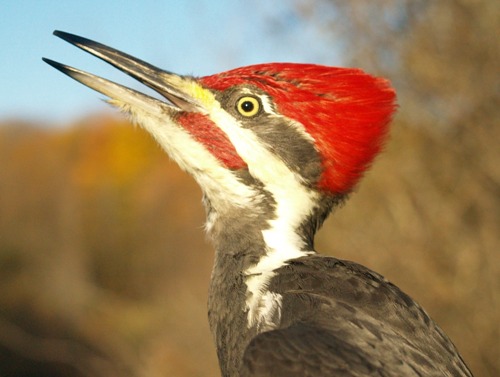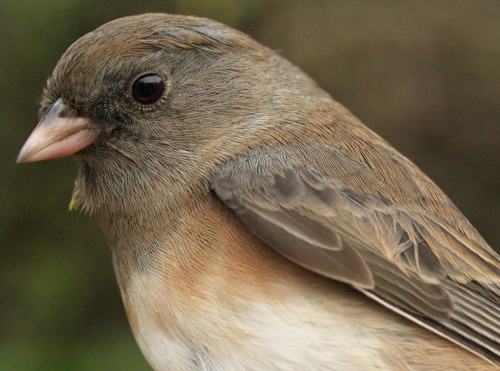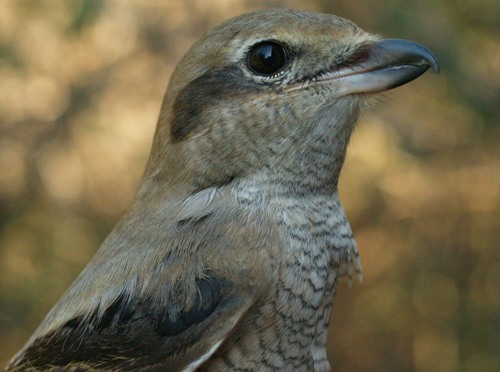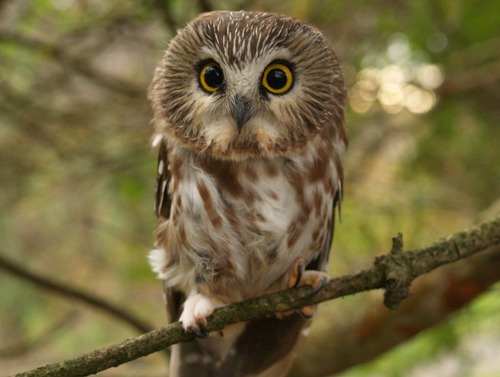|
McGILL BIRD OBSERVATORY |
||||||||||||||||||||||||||||||||||||||||||||||||||||||||||||||||||||||
Welcome
to the McGill Bird Observatory weekly report.
Click here for a complete listing of our archives.
Bander-in-charge: Bob Barnhurst, Simon Duval, Gay Gruner Notes: At the end of a generally disappointing October, this week's results were actually marginally better than those of the previous two. However, activity was again below average for this time of year, and unlike last year when we couldn't believe that the fall season was already ending, this year it certainly felt like it was time to bring the fall program to a close. As much as we've bemoaned the lack of birds (much more so on site than in the weekly reports!), we recognize that fluctuation from year to year is normal - it's just that the contrast is all the more stark when the quietest of our seven fall seasons immediately follows our busiest one! We can only hope that next fall the numbers will rebound at least to some extent.
We often get a small influx of "new" species in the final week of fall, and this year was no exception. Rough-legged Hawk and White-winged Crossbill were new for the year, while Northern Shrike, Eastern Bluebird, and Common Redpoll were additions just for the fall list. For much of this fall, our cumulative count of species observed has been above average, and fittingly our final total of 146 is four above the mean of 142 over our previous six fall programs. The Northern Shrike was also one of two species banded for the first time this fall, the other being Pileated Woodpecker. All three of this week's returns were Slate-colored Juncos, which is noteworthy as it demonstrates wintering site fidelity.
Better late than never, American Robin finally rose to the top of this week's list of species banded. The count wasn't even that far from our six-year average of 63 during week 13 - but the meagre season total of 79 is a full 200 below the norm, and a record low count by 40. American Tree Sparrow also had a big increase this week, and in this case it was the third-highest single week banding total for the species (behind week 13 in each of the two previous years). On the contrary, the junco numbers were remarkably anemic in what has overall been the peak week of fall for the species; the season total of 55 was barely more than 10% of last year's count, and only in 2006 did we band fewer in fall. White-throated Sparrows have usually mostly left by this time of year, so we actually were pleasantly surprised by the 10 that were banded this week, although they too ended up with the lowest total (214) since 2006. For a second week in a row we had a good number of Red-winged Blackbirds by fall standards, enough this time to crack the top five. The remainder of the top ten comprised a mix of likely winter residents (Black-capped Chickadee and Northern Cardinal), and late migrants (Ruby-crowned and Golden-crowned Kinglets, Brown Creeper, Hermit Thrush, and Song Sparrow). For a third week in a row, the top four species observed remained unchanged in rank, and this time the fifth place species stayed the same too. This week's top three species have each been atop this list in two of the previous six years, so Canada Goose now takes the lead with a third occasion, although the surge in Red-winged Blackbirds this week made it close. Mallard moved up to sixth place this week, but the other species in the bottom half of the top ten just shuffled around a bit, with the exception of White-throated Sparrow dropping out and getting replaced with Common Grackle. In the past, we have produced a detailed report summarizing each fall season; this year that content will instead be included in our first annual report on MBO research programs, which we hope to complete and make available on the MBO website early in the new year. For now though we can present a few initial summaries. The 2773 birds banded this fall is our lowest total in seven fall seasons, and despite some patches of bad weather our overall net hours ended up being higher than ever before, so our capture rate of 43.4 birds banded / 100 net hours over the course of the season was all the more a record low. As expected, Yellow-rumped Warbler numbers were a fraction of what we had in 2010, but less anticipated was the substantial drop in other usually dominant species, especially American Robin and several of the sparrows (notably Song, White-throated, White-crowned, and also Slate-colored Junco). Nonetheless, we tied or set new records for 18 of the 77 species we banded this fall, including 8 warblers - so there definitely was good news to be enjoyed. The top ten species banded this fall accounted for 57% of our overall total, quite a bit less than the 75% last year. For the first time ever, that group includes six warbler species (Magnolia, Tennessee, American Redstart, Nashville, Yellow-rumped, and Common Yellowthroat); also in the mix were two sparrows (White-throated and Song), plus Ruby-crowned Kinglet and American Robin (though just barely ahead of the next warbler in line). Half of these species (Ruby-crowned Kinglet, American Robin, Magnolia Warbler, Song Sparrow and White-throated Sparrow) have been in the top ten in each of our seven fall seasons. There are now 9 species with over 1000 individuals banded at MBO since 2004, and another 45 species with over 100 individuals banded. Yellow-rumped Warbler remains by far the most frequently banded species overall (5374), more than double the total for second-place Ruby-crowned Kinglet (2549), which is just barely ahead of White-throated Sparrow, rounding out the top three with 2548. Thank you to the many volunteers who helped make the fall migration monitoring program possible! We look forward to seeing everyone again in spring; meanwhile, keep an eye out for colour-banded House Finches and American Goldfinches - details to follow in our November report!
This was the fifth week of saw-whet owl banding this fall, and the second time (in addition to week 10) that we were able to operate every night of the week. Numbers were fairly modest, ranging from 1 to 8 nightly, for a total of 30 on the week, and 186 for the season. We also added yet another foreign recapture from Ontario on Saturday night, our ninth foreigner of the season. This one was banded last October at Thunder Cape Bird Observatory on Lake Superior, 1200 km west-northwest of MBO as the owl flies, making this individual the new long-distance champion among birds of all species recaptured at MBO. Like last year, we will continue with nightly coverage for another full week, and may continue informally beyond that if it appears that migration is not quite over yet. The final numbers will be reported as part of our November report.
|




